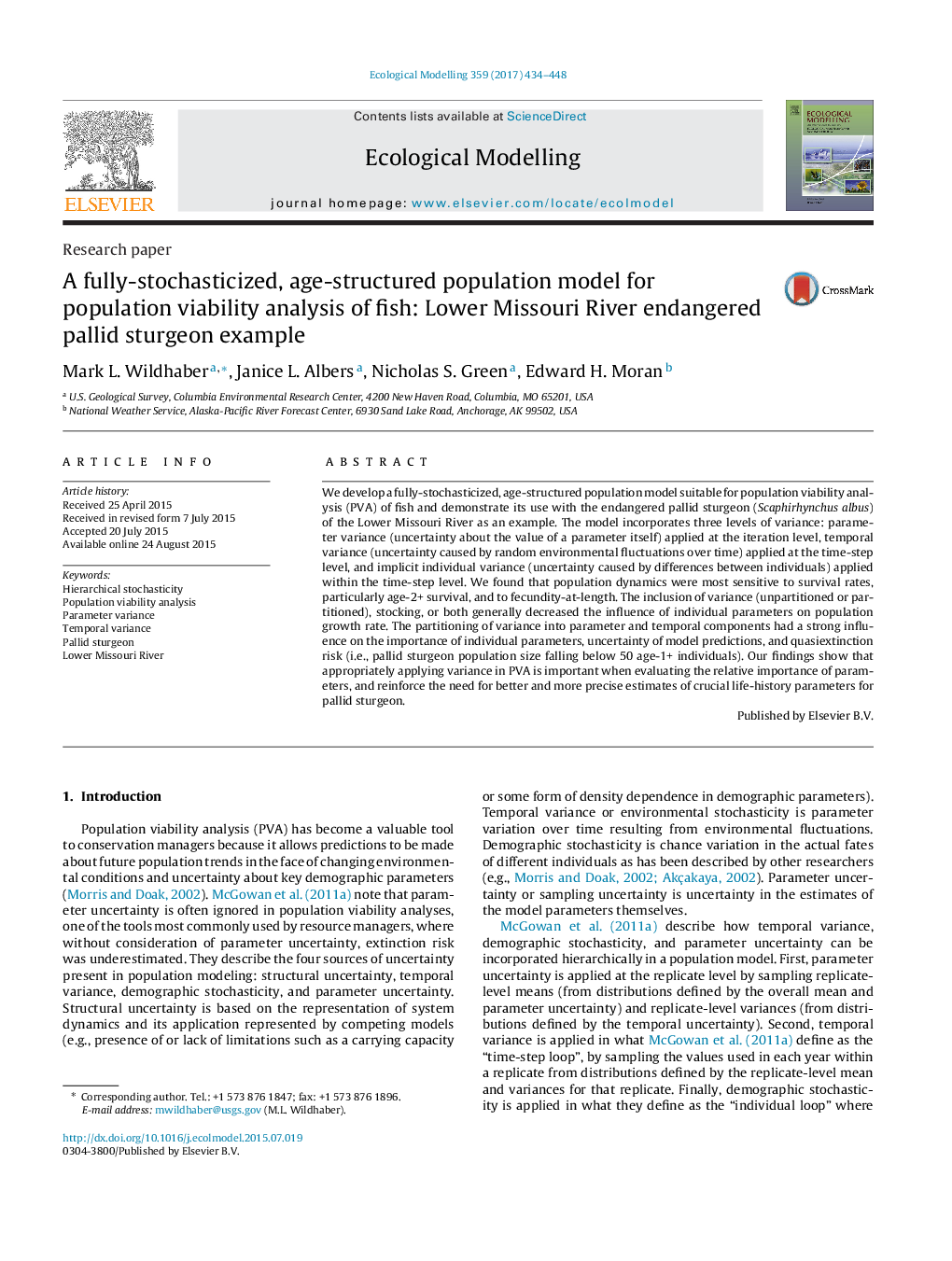| Article ID | Journal | Published Year | Pages | File Type |
|---|---|---|---|---|
| 5742153 | Ecological Modelling | 2017 | 15 Pages |
â¢Fully-stochasticized, age-structured population model for PVA of fish.â¢PVA applied to the endangered pallid sturgeon in the Lower Missouri River.â¢Includes hierarchical parameter, temporal, and implicit individual variance.â¢Both variance and stocking generally decreased influence of individual parameters.â¢Partitioned variance predicted greater extinction risk than naïve variance.
We develop a fully-stochasticized, age-structured population model suitable for population viability analysis (PVA) of fish and demonstrate its use with the endangered pallid sturgeon (Scaphirhynchus albus) of the Lower Missouri River as an example. The model incorporates three levels of variance: parameter variance (uncertainty about the value of a parameter itself) applied at the iteration level, temporal variance (uncertainty caused by random environmental fluctuations over time) applied at the time-step level, and implicit individual variance (uncertainty caused by differences between individuals) applied within the time-step level. We found that population dynamics were most sensitive to survival rates, particularly age-2+ survival, and to fecundity-at-length. The inclusion of variance (unpartitioned or partitioned), stocking, or both generally decreased the influence of individual parameters on population growth rate. The partitioning of variance into parameter and temporal components had a strong influence on the importance of individual parameters, uncertainty of model predictions, and quasiextinction risk (i.e., pallid sturgeon population size falling below 50 age-1+ individuals). Our findings show that appropriately applying variance in PVA is important when evaluating the relative importance of parameters, and reinforce the need for better and more precise estimates of crucial life-history parameters for pallid sturgeon.
